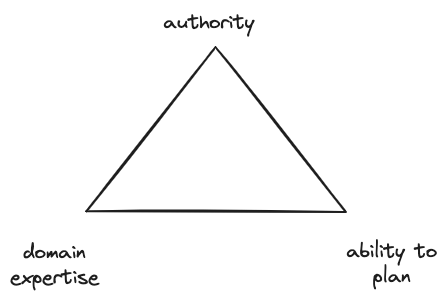One fun thing with having kids is that you get to repeat all the old stupid jokes to a brand new audience.
Here’s one:
How do you put an elephant in a refridgerator in three steps?
- Open the door.
- Put elephant in the refridgerator.
- Close the door.
It’s funny because the purported “answer” doesn’t address any of the important questions raised by the initial question; not the least of which regards the mismatch in geometry between a normal refridgerator (a household one that immediately springs to the minds of the audience) and the average live elephant. It’s funny to us becuase we are familiar with both of these concepts enough to immediately see the problem. So we immediately prioritize the critical concerns.
We all get it. But then we are somehow completely blind to the fact that …
… this is what our OKRs look like after a planning sprint.
At Google, as it is with many other large and aging tech companies, planning of this sort happens in middle management.
The requisite attributes for doing long arc planning are …
… authority, domain expertise, and ability to strategize. Choose (at most) two.

- Domain expertise concerns the understanding of the problem area that is being tackled.
- Ability to plan (or strategize) covers not just having a vision, but also enough understanding of the tools that are available to derive a set of strategies that will achieve a desirable goal.
- Authority is the propety of being in the right place in the organizational hierarchy to exert control over a group of people who are capable of executing on the strategies. I.e. being in management at the right level.
In tech, people get to management either by being promoted out of their zone of competence or by bullshitting their way up the management chain. Hence the distribution of the authority attribute doesn’t necessarily correlate with either of the other two attributes1.
So you end up with a layer of middle management that share the authority attribute, but at most one of the other two.
But in most cases “planning sprint” is code for “prepare for damage control” for those who have domain expertise and ability to plan attributes but not the authority attribute.
When people who understand neither refridgerators or elephants decide to solve problems, the outcome usually looks like the joke we mentioned before; but with the added injury of unrealistic timelines.
Worse, when the strategies are spelled out without understanding the problem or the purpose of a strategy, the outcome is that those those doing the work must frame their work in terms of putting something into a refridgerator in three steps.
This process is extra fun when the planners have decided to put not one but two things in the refridgerator without being specific about what they are. We know one of those things must be an elephant for the long term viability of the product, but the other one could be an orange for all we care. So the workers now have to frame “solving the elephant” in terms of “putting the elephant in the refridgerator”.
But the middle management layer continues to consider the orange and the elephant as being roughly equal problems. Hence those who play the ladder game know to work on the orange and not touch the elephant.
It is surprising how few good decisions need to be made in order to keep a multi-billion dollar enterprise chugging along – at least as far as investors are concerned. You should begin to understand why a company with so many smart people and so many brilliant creations can make so many self-defeating mistakes.
What is not suprising is the amount of fat that constitutes the middle management of these companies. The thermocline of truth ensures that those looking down from the top will never see the fat for what it is.
-
I can attest to the fact that there are people who only have the authority attribute. It is a thing.↩︎